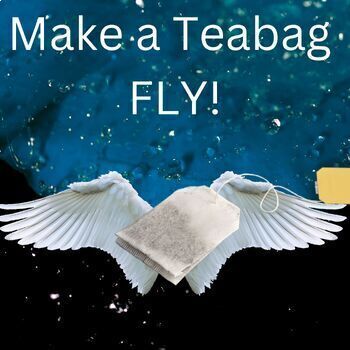Convection Heat Energy Fun Science Lab Middle & High School Science
- Word Document File
Description
Blast off! Be sure to get several empty tea bags ready, because this is one experiment your crew will want to do repeatedly. What’s going on? When the teabag is set on fire, the air is trapped, gets hot, and creates a thermal current. Then, poof! It escapes, taking the bag along for the rid
Materials
Unused Teabag one with a string and staple
Matches
Piece of aluminum foil or a glass plate
Sharpie
Scissors
Googles
Students will learn how convection currents can convert a normal tea bag into a flying rocket.
Convection is heat transfer by the movement of a fluid such as air or water when the heated fluid is caused to move away from the source of heat.
Included
1. Detailed Procedure
2. Questions
3. Answer key included
Heat experiment
The flying tea bag experiment is really a heat experiment masked as a super cool trick. As the flame burns it heats the air inside the hollow center of the tea bag. As the air gets hotter the molecules become less dense and move around. The less dense warmer air rises above the more dense cooler air around the tea bag.





